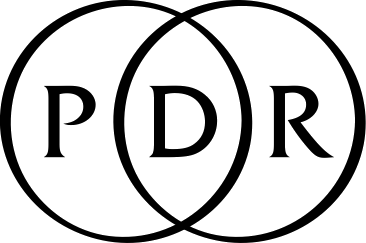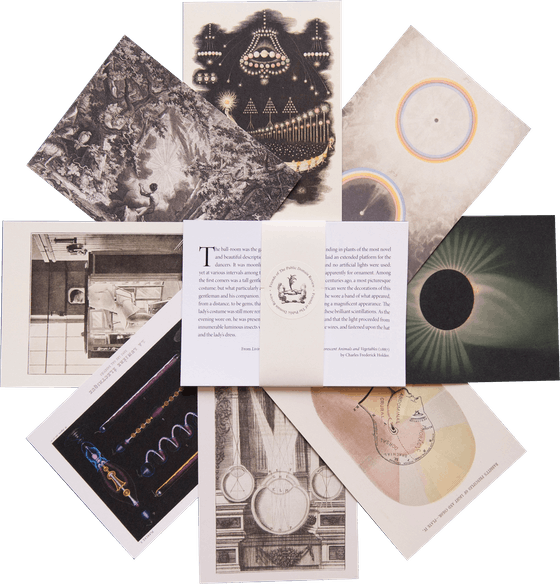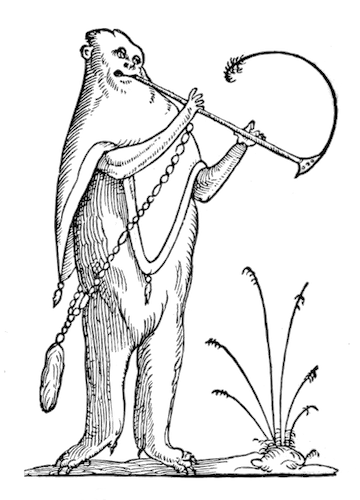
EssaysScience & Medicine

In mid-19th century Italy, two eccentric aristocrats set forth on parallel projects: constructing ostentatious castles in a Moorish Revival style. Iván Moure Pazos tours the psychedelic chambers of Rochetta Mattei, optimised for electrohomeopathic healing, and Castello di Sammezzano, an immersive, orientalist fever dream. more

Hooked on Sonics: Experimenting with Sound in 19th-Century Popular Science
Of all the senses cultivated throughout the 19th century, it was the sense of hearing that experienced the most dramatic transformation, as the science of sound underwent rapid advancement. Lucas Thompson delves into a particular genre of popular acoustics primers aimed at children and amateurs alike, which reveal the pedagogical, ludic, and transcendental strivings of Victorian society. more

Watching the World in a Dark Room: The Early Modern Camera Obscura
Centuries before photography froze the world into neat frames, scientists, poets, and artists streamed transient images into dark interior spaces with the help of a camera obscura. Julie Park explores the early modern fascination with this quasi-spiritual technology and the magic, melancholy, and dream-like experiences it produced. more

The Old, Old, Very Old Man: Thomas Parr and the Longevity Trade
As the story goes, Old Tom Parr was relatively healthy for being 152 until a visit to noxious, polluted London in 1635 cut his long life short. Katherine Harvey investigates the early modern claims surrounding this supercentarian and the fraudulent longevity business that became his namesake in the 19th century. more

As Bright as a Feather: Ostriches, Home Dyeing, and the Global Plume Trade
In the 19th century, dyed ostrich feathers were haute couture, adorning the hats and boas of fashionistas on both sides of the Atlantic. Whitney Rakich examines the far-reaching ostrich industry through a peculiar do-it-yourself-style book: Alexander Paul’s The Practical Ostrich Feather Dyer (1888), a text interleaved with richly colored specimens. more

“You Are My Friend”: Early Androids and Artificial Speech
Centuries before audio deepfakes and text-to-speech software, inventors in the eighteenth century constructed androids with swelling lungs, flexible lips, and moving tongues to simulate human speech. Jessica Riskin explores the history of such talking heads, from their origins in musical automata to inventors’ quixotic attempts to make machines pronounce words, converse, and declare their love. more

Professor Megalow’s Dinosaur Bones: Richard Owen and Victorian Literature
Richard Owen, the Victorian scientist who first named the “dinosaurs”, claimed that he could identify an animal, even an extinct one, from inspecting a single bone. Richard Fallon revisits other Owen-inspired fictions — by R. D. Blackmore, William Makepeace Thackeray, and Charles Kingsley — and finds literature layered with scientific, religious, and political interventions, spurred by the discovery of prehistoric life. more

From Snowdrop to Nightjar: Robert Marsham’s “Indications of Spring” (1789)
What can we learn from observing the progression of spring — a hawthorn’s first flowering, the return of birdsong on a particular day? Hugh Aldersey-Williams explores the lifelong calendrical project of Robert Marsham, the Norfolk naturalist considered Britain's first phenologist. more

Radioactive Fictions: Marie Corelli and the Omnipotence of Thoughts
Outselling books by Arthur Conan Doyle and H. G. Wells in their day, Marie Corelli’s occult romance novels brim with fantasies of telepathy, mesmerism, and radioactivity. Steven Connor revisits The Life Everlasting (1911), where the recent discovery of radium shapes the mechanics of phantasmal machines and psychic forces able to pass through all impediments. more

Marvellous Moderns: The Brothers Perrault
Charles Perrault is celebrated as the collector of some of the world’s best-known fairy tales. But his brothers were just as remarkable: Claude, an architect of the Louvre, and Pierre, who discovered the hydrological cycle. As Hugh Aldersey-Williams explores, all three were able to use positions within the orbit of the Sun King to advance their modern ideas about the world. more

The Ether Dreams of Fin-de-Siècle Paris
Those who sipped or sniffed ether and chloroform in the 19th century experienced a range of effects from these repurposed anaesthetics, including preternatural mental clarity, psychological hauntings, and slippages of space and time. Mike Jay explores how the powerful solvents shaped the writings of Guy de Maupassant and Jean Lorrain — psychonauts who opened the door to an invisible dimension of mind and suffered Promethean consequences. more

Troubled Waters: Reading Urine in Medieval Medicine
From cabbage green to coarse meal, medieval manuscripts exhibit a spectrum of colours and consistencies when describing urine. Katherine Harvey examines the complex practices of uroscopy: how physicians could divine sexual history, disease, and impending death by studying the body's liquid excretions. more

Beast in the Blood: Jean Denis and the “Transfusion Affair”
During the late 1660s in Paris, transfusing the blood of calves and lambs into human veins held the promise of renewed youth and vigour. Peter Sahlins explores Jean Denis’ controversial experiments driven by his belief in the moral superiority of animal blood: a substance that could help redeem the fallen state of humanity. more

Picturing Pregnancy in Early Modern Europe
When the womb began to appear in printed images during the 16th century, it was understood through analogy: a garden, uroscopy flask, or microcosm of the universe. Rebecca Whiteley explores early modern birth figures, which picture the foetus in utero, and discovers an iconic form imbued with multiple kinds of knowledge: from midwifery know-how to alchemical secrets, astrological systems to new anatomical findings. more

Displaying the Dead: The Musée Dupuytren Catalogue
When Paris’ infamous museum of anatomical pathology closed its doors in 2016, a controversial collection disappeared from view. Daisy Sainsbury explores the history of the Musée Dupuytren, and asks what an ethical future might look like for the human specimens it held. more

“Spontaneous Revolutions”: Darwin’s Diagrams of Plant Movement
After weeks of watching young tendrils slowly corkscrew their way toward the sun, Charles Darwin set about inventing a system for making botanic motion visible to the naked eye. Natalie Lawrence delves into a lesser-known chapter of the naturalist’s research, discovering revelations about the vegetal world that remain neglected to this day. more

Documenting Drugs: The Artful Intoxications of Stanisław Ignacy Witkiewicz
In pursuit of Pure Form, the Polish artist known as “Witkacy” would consume peyote, cocaine, and other intoxicants before creating pastel portraits. Juliette Bretan takes a trip through Witkiewicz’s chemical forays, including his 1932 Narcotics, a genre-bending treatise that warns of the hazards of drugs while seductively recollecting their delirious effects. more

Love and Longing in the Seaweed Album
Combing across 19th-century shores, seaweed collectors would wander for hours, tucking specimens into pouches and jars, before pasting their finds into artful albums. Sasha Archibald explores the eros contained in the pressed and illustrated pages of notable algologists, including “the most ambitious album of all” by Charles F. Durant. more

“Pajamas from Spirit Land”: Searching for William James
After the passing of William James — philosopher, early psychologist, and investigator of psychic phenomena — mediums across the US began receiving messages from the late Harvard professor. Channelling these fragmentary voices, Alicia Puglionesi considers the relationship between communication, reputation, and survival after death. more

Marxist Astronomy: The Milky Way According to Anton Pannekoek
Can a person’s experiences on earth alter how they perceive the stars? Lauren Collee peers through the telescope of Anton Pannekoek, the Dutch astronomer whose politics informed his human approach to studying the cosmos. more

Why do helical seashells resemble spiralling galaxies and the human heart? Kevin Dann leads us into the gyre of James Bell Pettigrew’s Design in Nature (1908), a provocative and forgotten exploration of the world’s archetypal whorl. more

“The Mark of the Beast”: Georgian Britain’s Anti-Vaxxer Movement
Ox-faced children, elderly women sprouting horns, and cloven minds — all features attributed to Edward Jenner’s vaccine against smallpox. Introducing us to the original anti-vaxxers, Erica X Eisen explores the “vacca” in the first-ever vaccine: its bovine origins and the widespread worry that immunity came with beastly side effects. more

The Uncertain Heavens: Christiaan Huygens’ Ideas of Extraterrestrial Life
During the 17th century, as knowledge of the Universe and its contents increased, so did speculation about life on other planets. One such source, as Hugh Aldersey-Williams explores, was Dutch astronomer, mathematician, and inventor Christiaan Huygens, whose earlier work on probability paved the way for his very modern evaluation of what alien life might look like. more
%3B_two_fruiting_bodie_Wellcome_V0043330 copy.jpg?width=600&height=1200)
Fungi, Folklore, and Fairyland
From fairy-rings to Lewis Carroll’s Alice, mushrooms have long been entwined with the supernatural in art and literature. What might this say about past knowledge of hallucinogenic fungi? Mike Jay looks at early reports of mushroom-induced trips and how one species in particular became established as a stock motif of Victorian fairyland. more


